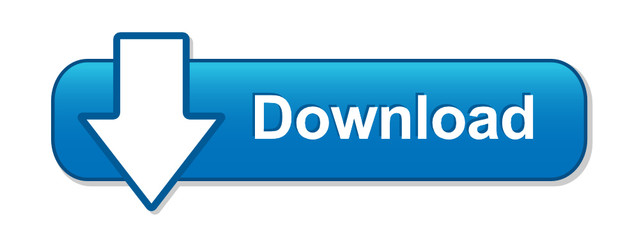Implementation of Business Process Mapping Framework for Indonesia’s Government Institutions
DOI:
https://doi.org/10.18196/jgp.v13i2.14736Keywords:
Bureaucratic Reform, Business Process Framework, Business Process Management, Business Process Mapping, Government Business ProcessAbstract
Government organizations today face unprecedented challenges in carrying out their vital mission and in an environment marked by shrinking budgets, strict regulations, and changing workforce status. The business process map is a diagram that shows the working relationship between organizational units that generate added value to all respective stakeholders. While there is some independent guidance available on how various tools support different aspects of business process mapping initiatives, organizations still need to determine what their specific needs are and be able to establish how information gathered on tool functionality can be evaluated against these needs. This study will explore the practices of implementation business process mapping in 10 government institutions in Indonesia using 3-dimentional framework approach. The research employed a qualitative approach with in-depth interviews, observation, and study documents were performed for collecting and analysis data. The framework was succeeding to describe a paradigm shifting to encourage people move from a silo thinking to cross function team. Finally, business process map as a foundation of organizational bureaucracy movement shows an improvement in institutional capacity to encourage administrator in operational consistency.
References
ABPMP. (2009). Guide to the Business Process Management Common Body of Knowledge (BPM COK). 2nd ed. Chicago: ABPMP Publishing
Arevalo C, Escalona MJ, Ramos I, Domínguez-Muñoz M (2016) A metamodel to integrate business processes time perspective in BPMN 2.0. Inf Softw Technol 77:17–33. https://doi.org/10.1016/j.infsof.2016.05.004
Ben M, Mohamed H, Faïez T (2019) A Multi-criteria Evaluation Approach for Selecting a Sensitive Business Process Modeling Language for Knowledge Management. J Data Semant. https://doi.org/10.1007/s13740-019-00103-5
Berente, N., Vandenbosch, B., Aubert, B., (2009), Information Flows and Business Process Integration. Business Process Management Journal. 15, 119–141
Brocke, Jan vom and Rosemann, Michael, 2015, Handbook on Business Process Management: Strategic Alignment, Governance, People and Culture, New York: Springer
Cadle James, Paul Debra, Turner Paul. (2010). Business Analysis Technique: 72 Essential Tools for Success. Swindon: BCS Learning & Development Limited.
Davies, Islay and Reeves, Micheal (2015). Handbook on Business Process Management 1, International Handbooks on Information Systems, Second Edition, Berlin: Springer, DOI 10.1007/978-3-642-45100-3_16, pp.371-392
Fleaca, Elena and Fleaca, Bogdan. 2015.The Business Process Management Map – an Effective Means for Managing the Enterprise Value Chain. 9th International Conference Interdisciplinarity in Engineering, INTER-ENG, Proc 954 – 960.
Forstner, E., Kamprath, N., Röglinger, M., (2014), Capability Development with Process Maturity Models: Decision Framework and Economic Analysis. Journal of Decision Systems 23(2), 127–150
Hammer, Michael. (2015). What is Business Process Management. New York: Springer.
Hanson, J.E., Nandi, P., Kumaran, S., (2002), Conversation Support for Business Process Integration. In: Proceedings of the Sixth International Enterprise Distributed Object Computing Conference, IEEE, Lausanne, Switzerland, pp. 65–74
Harmon, Paul. (2007). Business Process Change: A Guide for Business Managers and BPM and Six Sigma Professionals. 2nd Edition. Morgan Kaufmann Publisher. Burlington, USA.
Haseeb J, Ahmad N (2020) Application of formal methods to modelling and analysis aspects of business process reengineering. https://doi.org/10.1108/BPMJ-02-2019-0078
Helfat, C.E., Peteraf, M.A., (2003), The Dynamic Resource‐Based View, Capability Lifecycles. Strategic Management Journal 24(10), 997–1010.
Kobayashi, T., Tamaki, M., Komoda, N., (2003), Business Process Integration as A Solution to The Implementation of Supply Chain Management Systems. Information Management.40, 769–780
Manning, Nick, and Sam Agere (2002). Current Good Practices and New Developments in Public Sector Service Management. London, Commonwealth Secretariat.
Ministry of State Apparatus Empowerment and Bureaucratic Reform of the Republic of Indonesia. 2020. Bureaucratic Reform Road Map 2020-2024. Available at: https://peraturan.bpk.go.id/Home/Details/143701/permen-pan-rb-no-25-tahun-2020
Nesic Z, Ljubic L, Radojicc M, Vasovic JV (2016) .A model of information flow management in the function of business processes improvement. CINTI 2015 - 16th IEEE Int Symp Comput Intell Informatics, Proc 209–214. https://doi.org/10.1109/CINTI.2015.7382924
O’Leary-Kelly, S.W., Flores, B.E., (2002), The Integration of Manufacturing and Marketing/Sales Decisions: Impact On Organizational Performance. Journal Operation Management. 20, 221–240
Object Management Group. (2011), Business Process Model and Notation, v2.0. Needham: Object Management Group
Pauker, F., Mangler, J., Rinderle-Ma, S., Pollak, C., 2018, Work – Modular Secure Manufacturing Orchestration, In: Proceedings Of The Dissertation Award, Demonstration, And Industrial Track at BPM 2018. In: Presented at the 16th International Conference on Business Process Management, Sydney, Australia.
Sale, R.S., Mesak, H.I., Inman, R.A., (2017), A Dynamic Marketing-Operations Interfacemodel Of New Product Updates. Europe Journal Operation Research. 257, 233–242
Schneider, C. Q; and Rohlfing, I. (2013). Combining QCA and Process Tracing in Set-Theoretic Multi-Method Research. Sociological Methods & Research. 42 (4), 559-597.
Teixeira J, Santos MY, Machado RJ., (2018). Business Process Modeling Languages and their Data Representation Capabilities. Int Conf Intell Syst 4:3–9
Tukiran, Martinus. (2016). Pemetaan Bisnis Proses & Penyusunan SOP Instansi Pemerintah. Yogyakarta: Leutikaprio
Tukiran, Martinus, and Amalia, Nurul. (2020). Petunjuk Praktis Penyusunan Peta Proses Bisnis Instansi Pemerintah. Yogyakarta: Kanisius
Tukiran, Martinus, and Sari, Nugraheni. (2020). Membangun Sistem Manajemen Organisasi Pendidikan Berdasarkan ISO 21001:2018. Yogyakarta: Kanisius
Weber, Max (2009) “The Theory Of Social And Economic Organization.” New York, Simon and Schuster
Downloads
Published
Issue
Section
License

This work is licensed under a Creative Commons Attribution-NonCommercial 4.0 International License.
Jurnal Studi Pemerintahan is licensed under a Creative Commons Attribution-NonCommercial 4.0 International (CC BY-NC 4.0) license.





